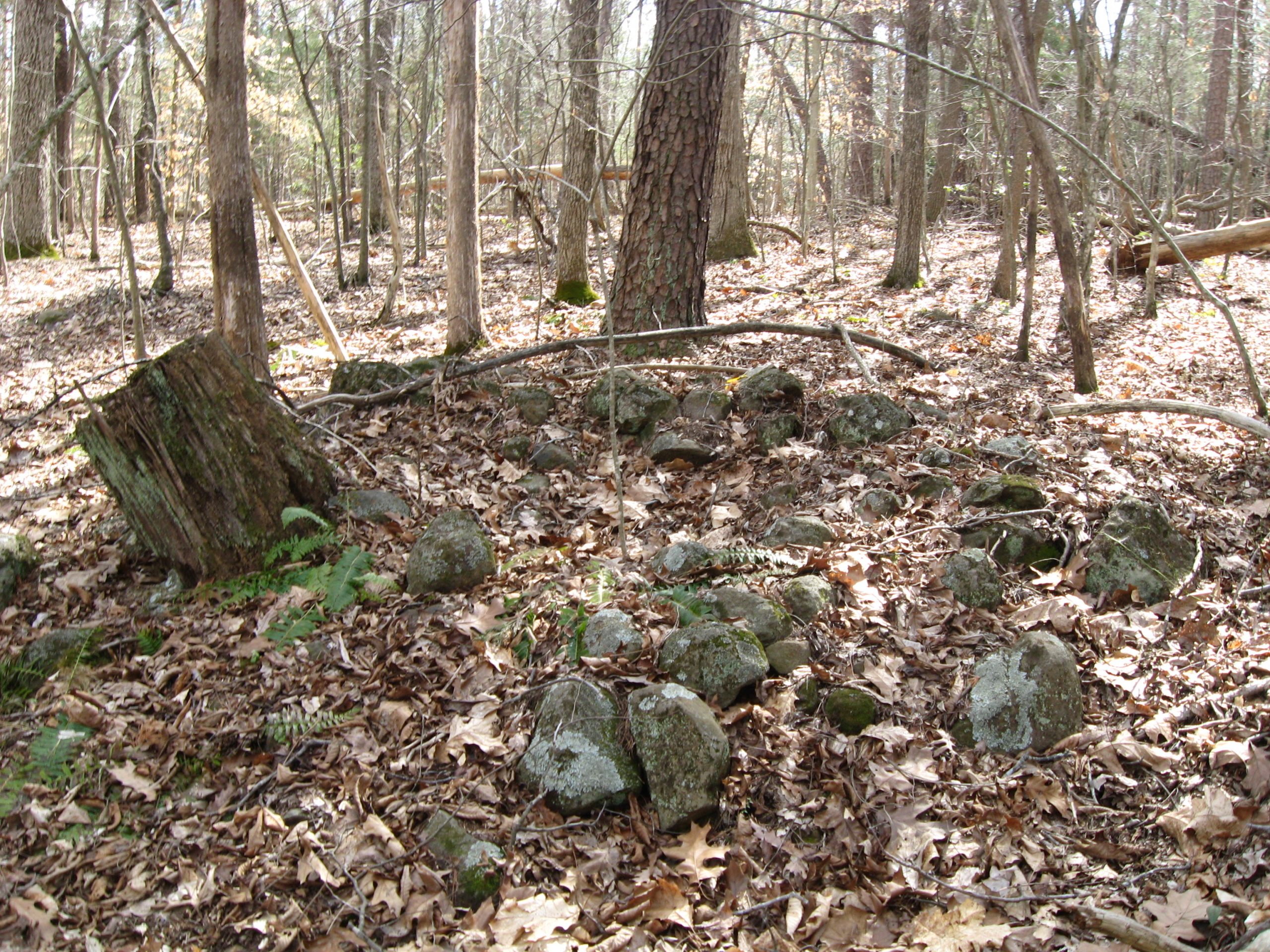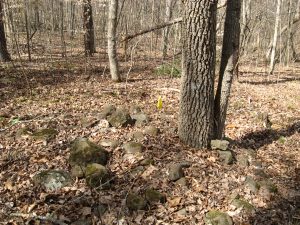The Prince Edward Soapstone Quarry is located on 12 acres of land near Farmville, Virginia. More than 150 piles of soapstone (also known as steatite) boulders and preforms span the length of the site. Preforms are steatite boulders that humans formed into an ovoid shape in preparation for making them into bowls. Creating the preform is the first step in soapstone vessel production, as the stones were more easily handled after they had been shaped into oval forms.
This site was first documented by Jim Jordan, an archaeologist at Longwood University who uncovered stone axes and possible soapstone vessel fragments there. One particularly striking artifact is a soapstone boulder that has been carved with an image that appears to be a snake. The boulder piles were later mapped, and their linear pattern suggests that they sit on a seam of soapstone that runs along a ravine.
The quarry dates to the Late Archaic period (ca. 3000–1000 B.C.), the end of which was characterized by the production of vessels and other objects carved from soapstone. The vessels were generally shallow and oblong or rectangular with lug handles for carrying. The piles likely represent resource stockpiling.






